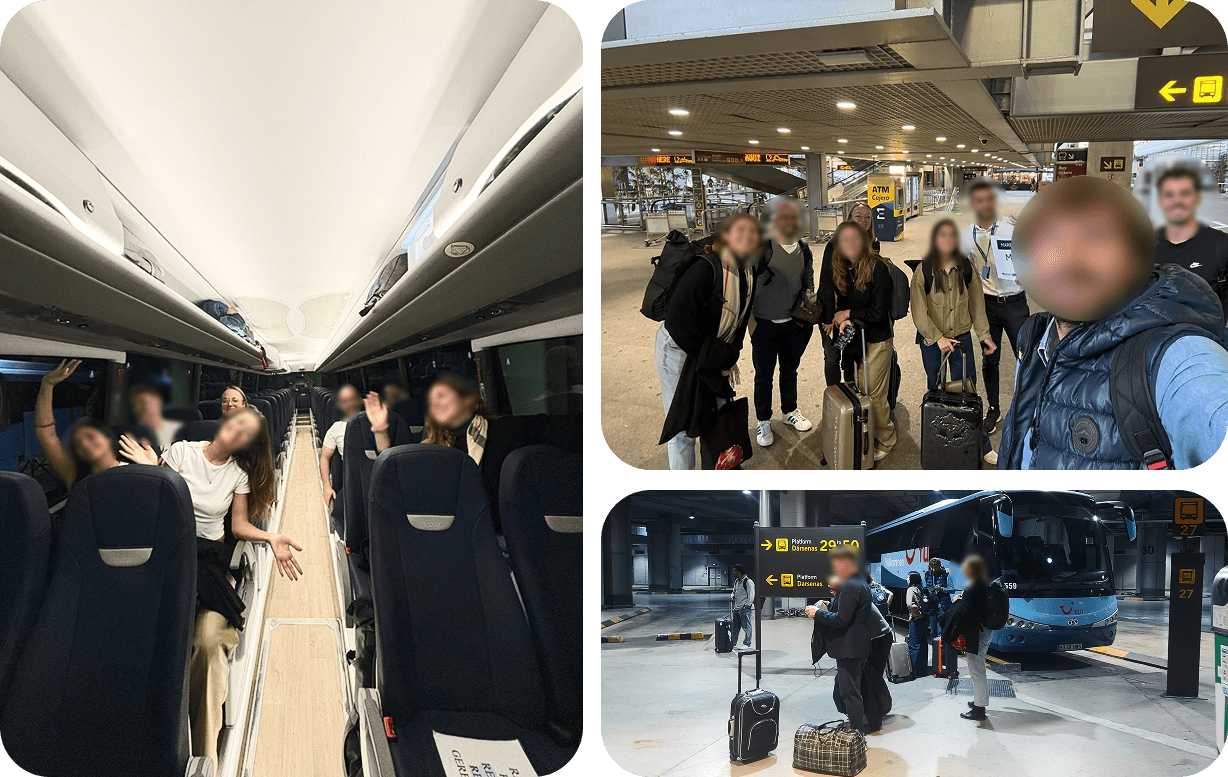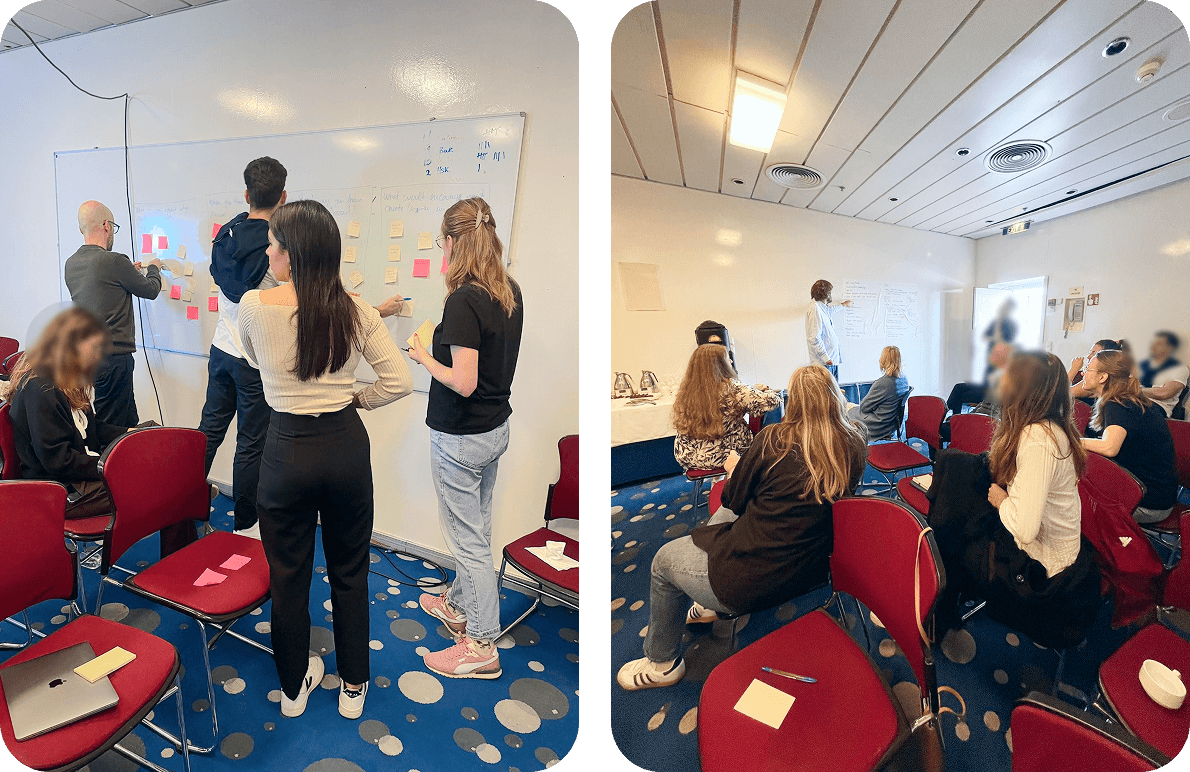What a Cruise Taught Me About UX Research
Role & Collaboration
- Built a business case to gain stakeholder buy-in.
- Defined research goals and questions.
- Conducted secondary research to identify knowledge gaps.
- Designed participant recruitment guidelines for crew.
- Served as point of contact for colleagues conducting interviews.
- Led and facilitated field interviews.

Context
In late 2024, our product team worked on two major cruise-related projects: creating a native book flow inside of the flag app and merging multiple cruise apps into a single, seamless booking and trip management experience.
Until then, most of our decisions were based on quantitative data, which lacked nuance – especially about users who avoided the app altogether. To bridge this gap, we ran a field study onboard a cruise ship with the goal of uncovering pain points, delight moments, and accessibility barriers.
Goals
- Identify core friction points and moments of delight during a cruise journey.
- Understand contexts and motivations for using (or not using) the app.
- Explore accessibility barriers in digital and physical cruise experiences.
Discovery

Methods
To answer these questions, we chose methods that would allow unexpected themes to emerge. We conducted structured user interviews with passengers, supplemented by a diary study cruise experience. We also interviewed the onboard customer experience manager to better understand operational processes, and collected crew insights, since many passengers relied on staff rather than the app. Finally, upon our return, we synthesized all observations into a journey map that visualized the patterns we uncovered.
Our participants included twenty cruise guests recruited by the crew, most of them older adults with years of cruising experience. We intentionally kept the number small to foster trust and allow each person enough time to share their story.
Key findings
- Information architecture was weak, and the app’s search and navigation were not intuitive, particularly for less tech-savvy passengers.
- Connectivity issues caused ongoing frustration, with many users struggling to connect to the ship’s network.
- Offers and content were not always updated on time, making it difficult for passengers to plan.
- Emotional connection was one of the strongest drivers of loyalty. Many returning customers rebooked because of the memories and trust built during their last trip.
- Perceived quality reinforced that trust – passengers expected consistency in both the physical and digital experience.

Outcomes
Back on shore, we gathered interview notes from all researchers and clustered them using affinity boards. Patterns quickly emerged, which we shared with the wider app and web team. The findings sparked important conversations about technical limitations and provided evidence to prioritize fixing some long-standing issues.
Most importantly, the study directly influenced the project of merging multiple apps into one seamless experience, to simplify the journey from booking to trip management. The insights also guided us in redesigning the booking flow to reduce reliance on in-person support.
Recommendations
- Improve information architecture to make trip planning and management more intuitive, with clearer entry points and contextual content.
- Re-engage users who explored the app but chose to book in physical stores.
- Simplify access and usability for older and less tech-savvy customers, with guided in-app experiences and better support for offline use.

Challenges
The study was not without obstacles. Most of our participants were experienced cruisers who had already learned to navigate common issues, which limited our perspective on first-time challenges. Due to miscommunication with the crew, we were unable to recruit participants with accessibility needs, leaving an important gap in our findings. And finally, the ship itself proved to be a difficult environment: noise and interruptions made it challenging to conduct and record interviews smoothly.
Future considerations
- Recruit a diverse participant mix, including both new and returning customers, to capture a wider range of perspectives and experiences.
- Include participants with accessibility needs – either during the field study or through complementary remote sessions – to ensure their challenges are represented.
- Assess the research environment in advance and take ownership of selecting suitable spaces to minimize distractions and ensure high-quality sessions.
Reflection
Beyond the research, it was an eye-opening look into the complexity of cruise operations and a deeply bonding experience with colleagues from across the world. Both the professional and personal lessons continue to influence how I approach my work today.